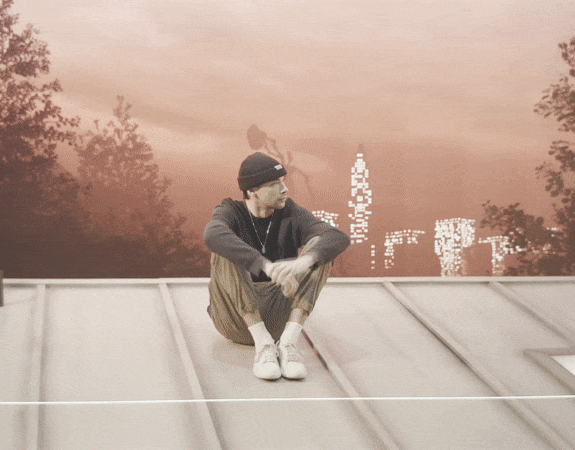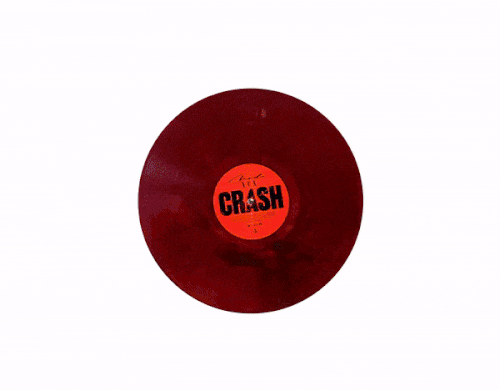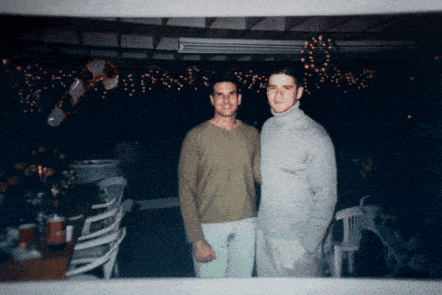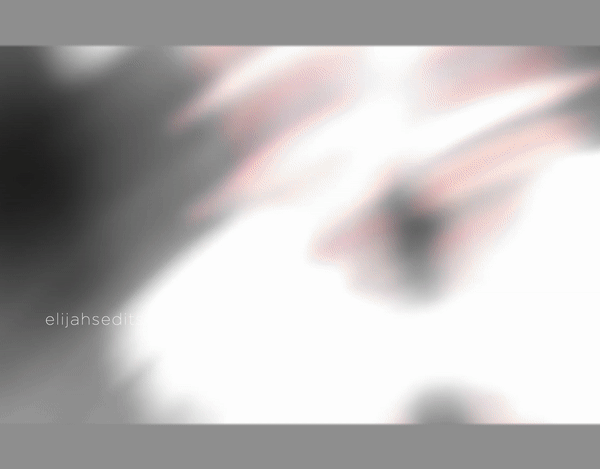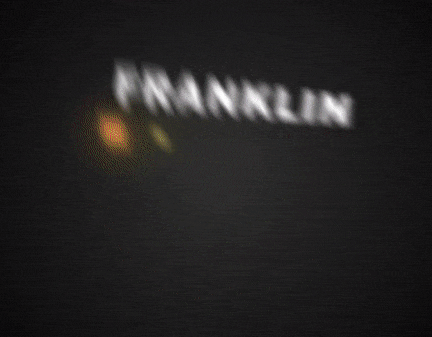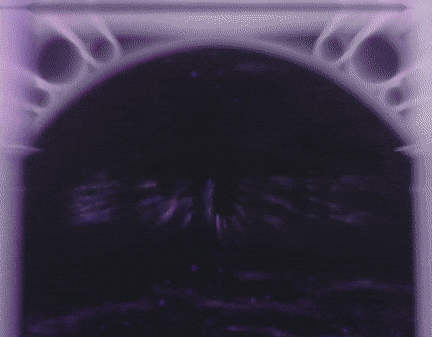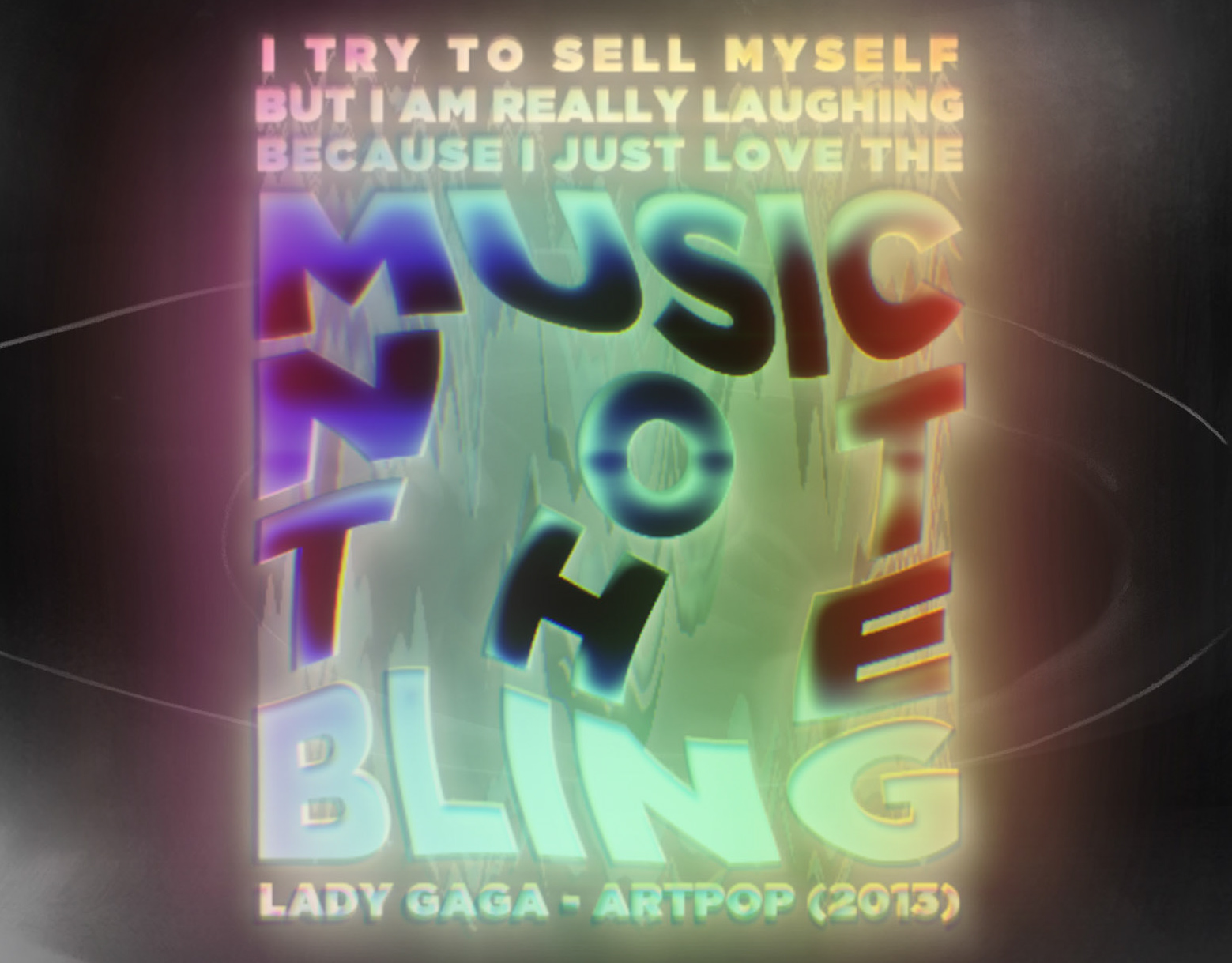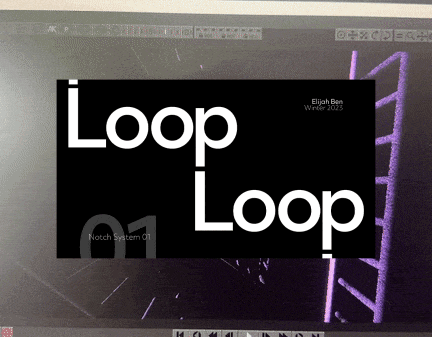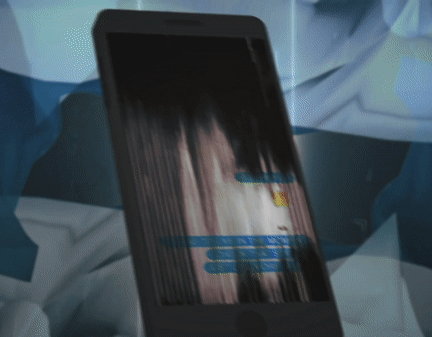Motion Visuals for a "Super Bowl style" medley performance to Rina Sawayama's "Hold The Girl" (2022) album.
Using Artificial Intelligence, my musical intuition, and a lot of creativity I crafted my dream “mashup” performance of Rina Sawayama’s “Hold The Girl” (2022) album. Listen along and enjoy the visual experience.
Full Thesis Audio
Channeling my obsession with world tours and concerts, I pitched the idea of creating a long-format visualizer (to be used as a backdrop) for an LED stage for my thesis. Throughout those following ten weeks, I built my dream stage layout featuring a detailed screen setup, six and a half minutes worth of visuals, and a ten-minute audio-engineered medley performed while the visuals played.
Calling upon the likeness of concert films, I wanted my thesis to be theatrical. Utilizing highly designed elements that embraced the identity and message of Rina Sawayama’s sophomore album “Hold The Girl” (2022). Not only would this project focus on honing skills in making motion visuals, but understand the boundaries of complementary visual work that should not overpower the performance going on in front of it. Various moments of dramaticism were contrasted with softer background visuals to drive parallels between the high-energy numbers and emotional numbers in this performance.
Because the selected album was freshly released, I used Artificial Intelligence to isolate vocals and instrumentals from the studio versions of the songs and introduced theatrical audio elements to transition the tracks together. Sampling hurricane noises, shattering glass, highway sounds, and more in the final mix. Practicing self-producing techniques, I called upon the work of Peter Sellars, Josef Svobpda, and Tadeusz Kantor when crafting my mood boards. Their stage design was most inspiring when building the stage in Unreal Engine. Their work allowed me to establish a proper visual foundation in the early stages of thesis production.
Part two of my thesis production will further research building environments inside Unreal Engine and ultimately lead to an enhanced understanding of how to pilot cameras around a virtual environment for the duration of a performance. Below, you can see some of my preliminary work inside Unreal Engine 5. This content ultimately serves as a mockup of where this performance would take place. Early fabric simulations can be seen on the right, exemplifying the depth of the space for prop placement and staging.
Programs Used:
After Effects, RedGiant Trapcode, Unreal Engine, Cinema4D
–––––––
Mood Boards
(click to enlarge images)
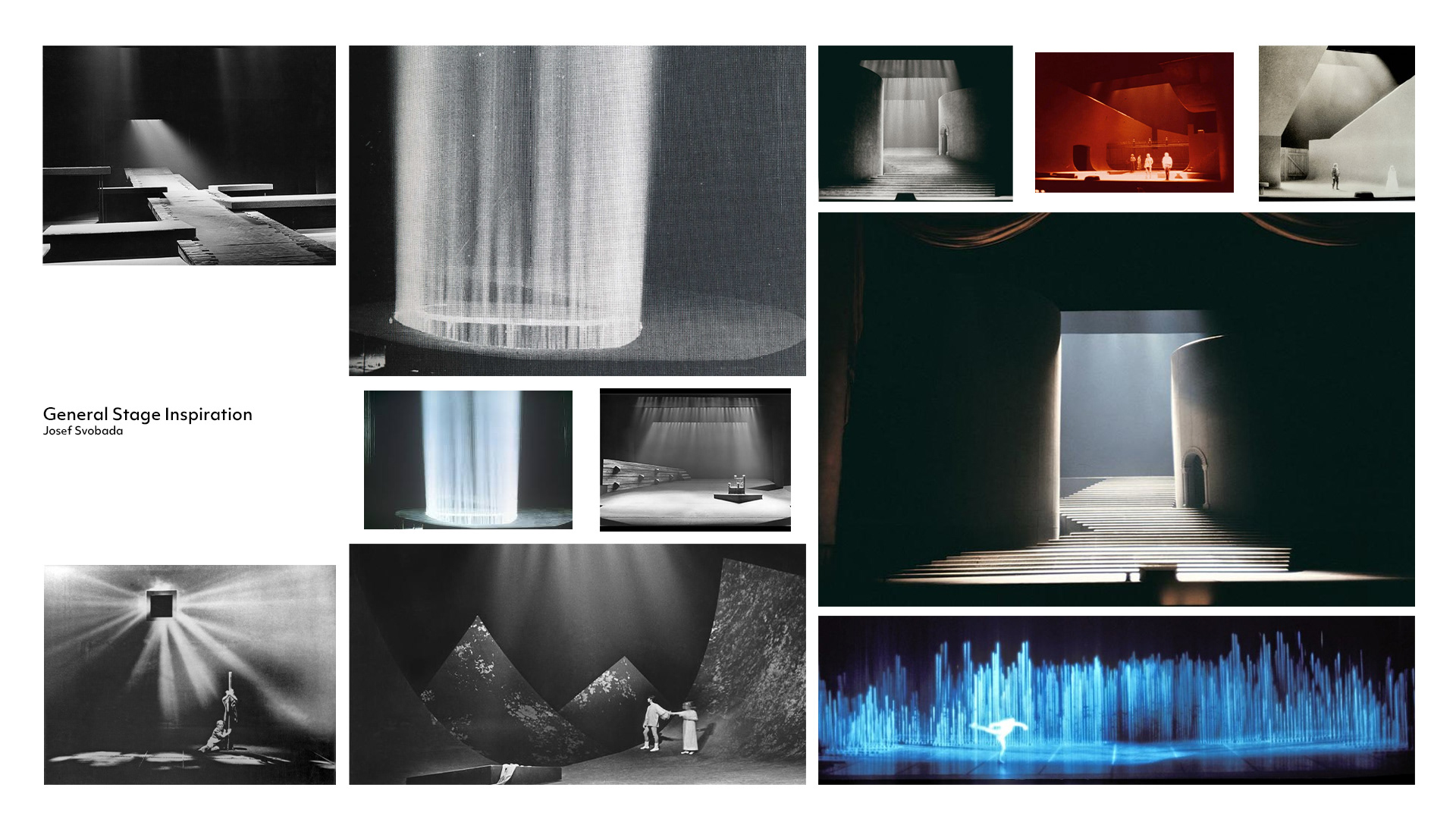
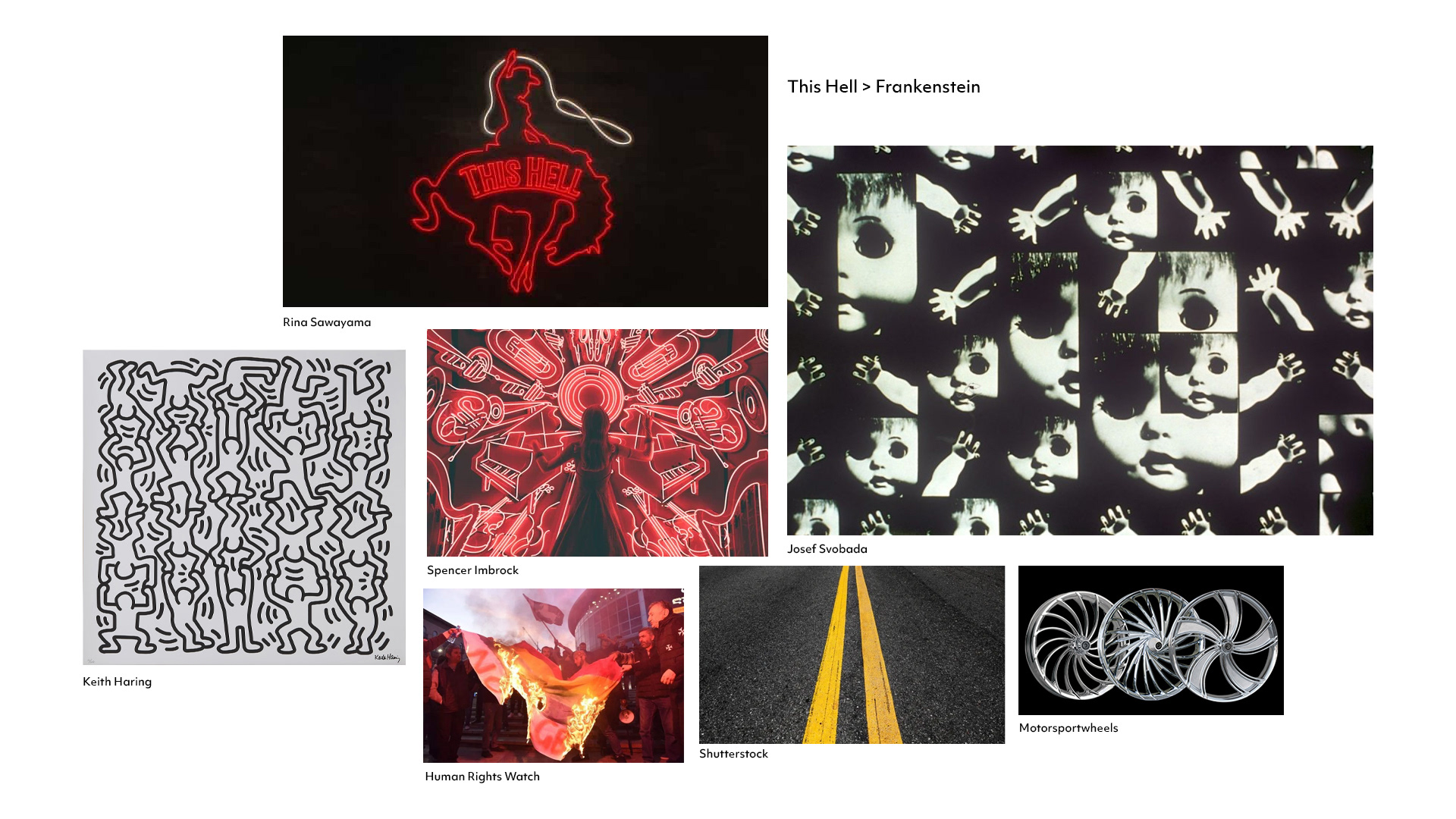
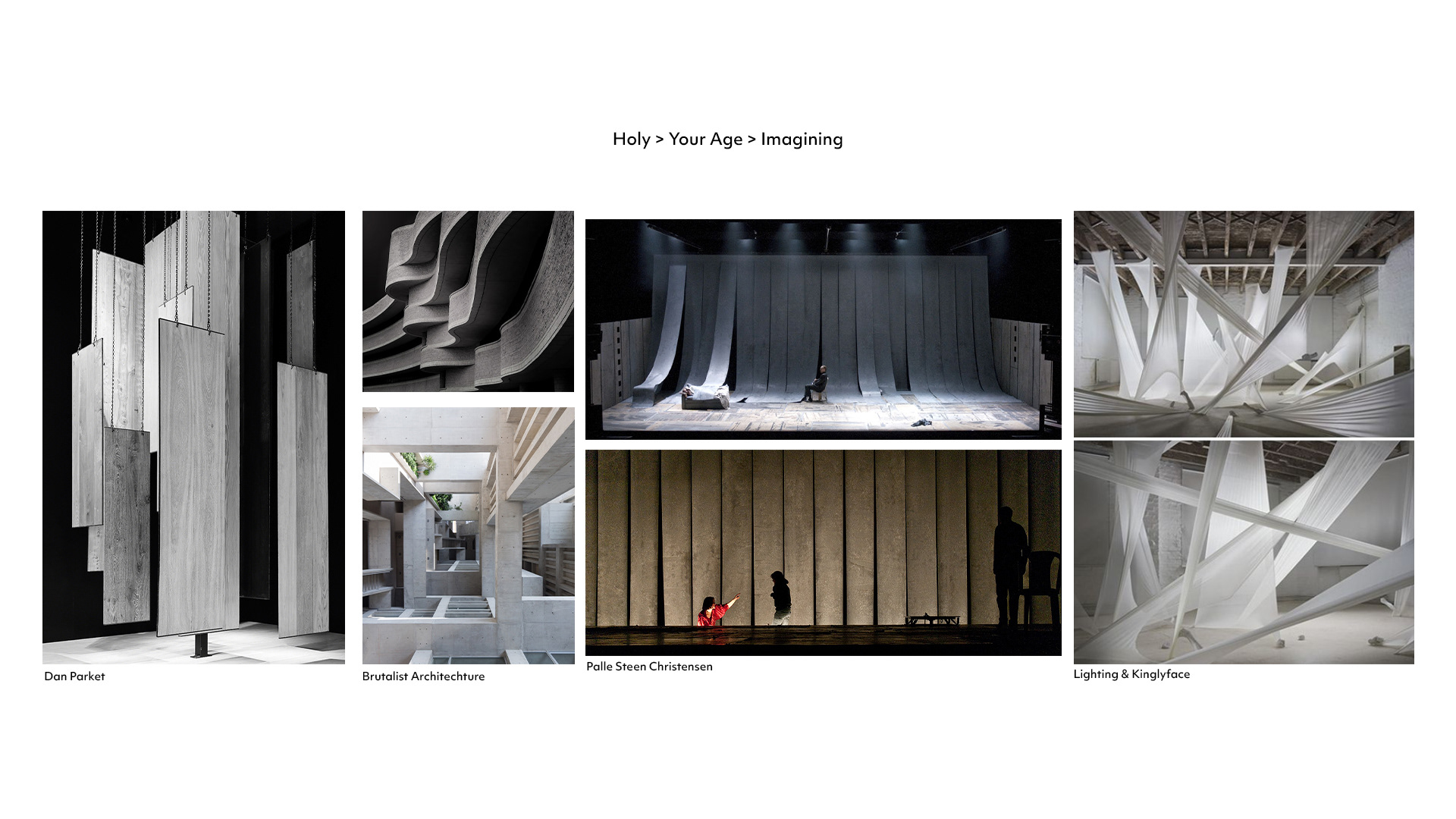
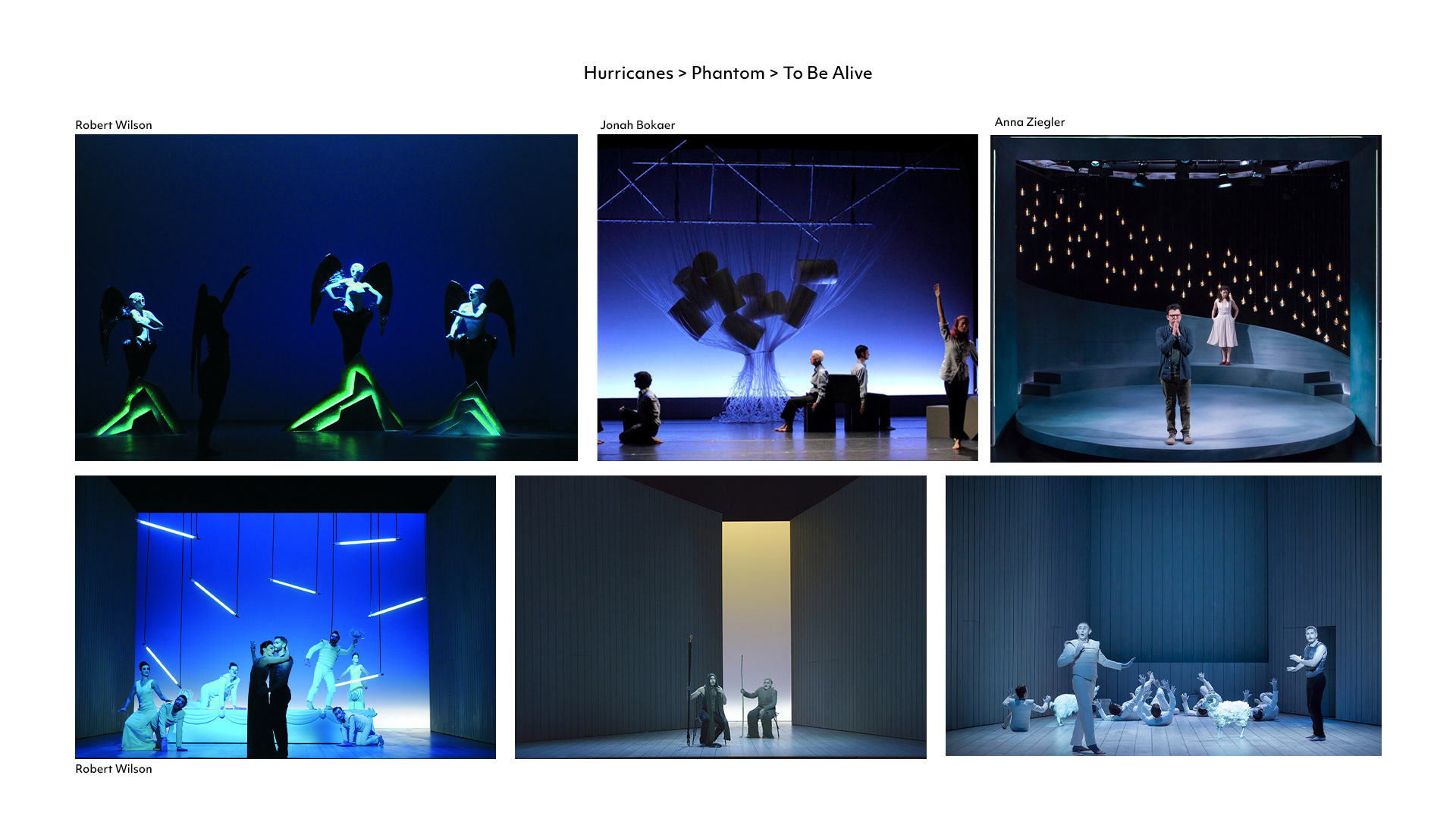
––––––
Looking towards the future, I started building an environment inside Unreal Engine 5, where I plan to pilot the virtual cameras and engineer the final performance. The dream was to be able to present this thesis on an Interactive LED volume where the majority of props, staging, and lighting happens virtually with little to no team needed on shoot day.
